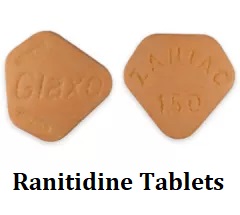 The popular antacid drug Zantac (ranitidine) is the ongoing subject of hundreds of lawsuits filed against its makers. First marketed in 1981, Zantac was to become the best-selling drug in history. That all changed in 2019 when independent pharmacy Valisure discovered unsafe levels of NDMA in Zantac. Then in April 2020, the U.S. FDA requested the removal of Zantac and all ranitidinie products from the market. Since then, several lawsuits have been filed for plaintiffs who took Zantac and later developed cancer.
The popular antacid drug Zantac (ranitidine) is the ongoing subject of hundreds of lawsuits filed against its makers. First marketed in 1981, Zantac was to become the best-selling drug in history. That all changed in 2019 when independent pharmacy Valisure discovered unsafe levels of NDMA in Zantac. Then in April 2020, the U.S. FDA requested the removal of Zantac and all ranitidinie products from the market. Since then, several lawsuits have been filed for plaintiffs who took Zantac and later developed cancer.What is NDMA?
NDMA is the acronym for N-nitrosodimethylamine. NDMA is a yellow, odorless liquid chemical once used to make rocket fuel. It is also a byproduct of several manufacturing processes, as well as water chlorination. Small amounts of NDMA may occur in water, soil, and air.
The International Agency for Research on Cancer (IARC) classifies NDMA as a group 2A carcinogen – “probably carcinogenic to humans.” Sufficient evidence shows that it causes cancer in humans.
Beginning in 2018, the U.S. FDA released a series of warnings about several medications contaminated with NDMA. Some of these medications had higher than acceptable levels and were recalled.
Recalled drugs include valsartan and other blood pressure drugs in the ARB class, Zantac (ranitidine) and metformin.
Recent Zantac Lawsuit Developments
- Nov. 1, 2021 – District Judge Robin L. Rosenberg of the United States District Court for the Southern District of Florida runs MDL-2924 – Zantac (Ranitidine) Products Liability Litigation
- Oct. 16, 2021 – Zantac Mass Tort Lawsuit (Personal Injury – Health Care or Pharmaceutical Personal Injury) – Products Liability Litigation
- Sept. 24, 2021 – The first trial of Zantac is scheduled for October 10, 2022 in CA
- June 18, 2021 Judge Rosenberg dismisses claims against retailers Albertsons, Amazon, Costco, CVS Pharmacy, The Kroger Co., Walgreens.
- April 1, 2020 – FDA Requests Removal of Zantac (and all Ranitidine Products) from the Market
- Feb. 6, 2020 – U.S. Judical Panel on Multidistrict Litigation (MDL): Zantac (Ranitidine) Products Liability Litigation
Cancers Linked to Zantac
Studies are still in progress to examine the cancer-causing propensities of NDMA in Zantac. FDA has called NDMA a “probable” carcinogen, which has led many to consider whether Zantac use was responsible – in whole or in part – for the cancer they or their loved ones developed. Several types of cancers have been linked to Zantac, including:
Zantac Bladder cancer – A 2004 study showed ulcer-sufferers taking Zantac or Tagamet — another antacid — had a heightened risk of developing bladder cancer.
Zantac Stomach cancer – Sometimes referred to as gastric cancer, stomach cancer has many subtypes that can form in the digestive tract. Several of these stomach cancers have been linked to NDMA and Zantac.
Zantac and Testicular cancer – Some lawyers have claimed testicular cancer can develop in young boys when their mothers have taken Zantac while pregnant.
Breast cancer – Breast cancer is the most common type of cancer, accounting for 53% of all U.S. cancer cases, with 54% of the deaths. Though FDA has yet to cite specific cancers caused by NDMA, breast cancer is often cited in studies.
Kidney Cancer – Kidney cancer was at issue in one of the first lawsuits filed against Zantac and Ranitidine makers. That case was brought by an Ohio woman who developed stage four kidney cancer after taking two Zantac pills per day for 12 years.
Zantac Injury Symptoms and Side Effects
Common cancer symptoms can also be symptoms of other ailments that may or may not be linked with Zantac (Ranitidine) use. These could include:
- dramatic weight loss
- changing bowel movements
- blood in the urine or stool
- lump(s) in the breast or testicles
- discharge of the breast
- loss of appetite
- persistent fever.
Possible Zantac Side Effects
Zantac or other antacid drugs rarely cause side effects, but some users have reported stomach and bowel complaints that include diarrhea, nausea, constipation, and stomach aches. Other reported Zantac/ranitidine side effects include swollen or tender breasts, insomnia, headaches.
Some users have reported serious Zantac side effects such as yellow or green mucus, dark urine, physical weakness, vision problems, yellowing of skin.
NDMA Dangers in Zantac
Both FDA and third party labs employing FDA-approved tests have found NDMA levels in ranitidine to be “alarmingly high”. Testing done by the independent pharmacy Valisure, found NDMA levels to be more than 3,000 times higher than the FDA-recommended daily dose.
Though FDA has agreed that levels of NDMA in Zantac and other ranitidine products increase over time to an unacceptable level for daily intake, the agency calls the high NDMA levels found in Zantac an “impurity”. FDA says NDMA was present in both the finished drug product samples and the active pharmaceutical ingredients (APIs). However, two other independent labs using FDA-approved testing did not yield that result. According to their testing, NDMA is not added; rather, it forms as a by-product of the chemical process that occurs when the drug sits out. Emery Pharma testing shows NDMA can increase during storage, especially if exposed to high heat and even while it remains in the package. In addition, Valisure’s testing results show NDMA is actually formed in the body upon consumption. In September 2019, Valisure’s testers sent a citizen petition to the FDA warning of their findings.
NDMA Stanford Research Discovery
A 2016 Stanford University research study further supports Valisure’s results. The study tested adult urine samples 24 hours before and after ingestion of a standard dose of 150 mg of ranitidine. The results found NDMA levels in the urine increased 400-fold, from 110 ng to 47,600 ng. The researchers believe these levels show actual NDMA exposure in the body has been largely underestimated; because just a small fraction of NDMA is excreted in the urine. Actual exposure is thought to be much higher.
Though more investigation and transparency is needed by the FDA and other governing bodies to explore the cancer risks of NDMA in ranitidine drugs, current knowledge and evidence suggest NDMA levels in Zantac are not safe.
RELATED
- Zantac Cancer Lawsuit | Lawyer
- Zantac Lawsuit Update – August 2021
- Zantac Maker Accused of Destroying Recall Emails
- Zantac Defendants claim FDA Relationship protects them from Liability
- FDA orders Zantac Heartburn Drug Recall

by Matthews & Associates




